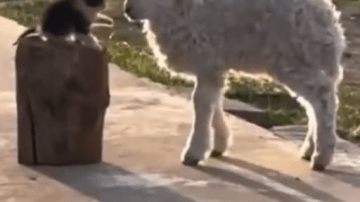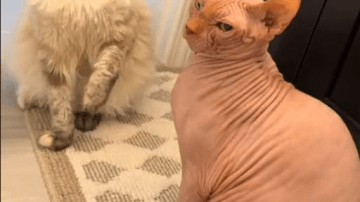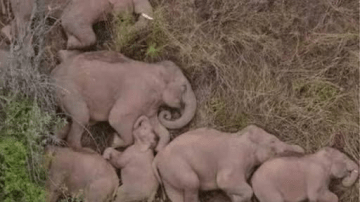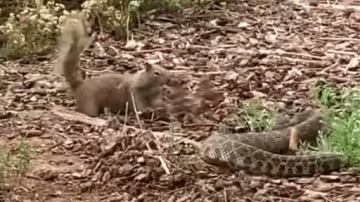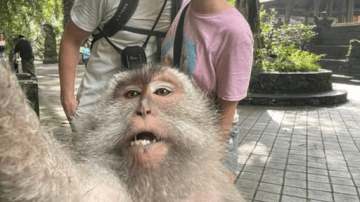The first light of dawn spread softly over the rolling green of Kenya’s Shimba Hills, carrying with it both beauty and an unspoken urgency. Somewhere deep in that wilderness, among the rustle of acacia trees and the calls of hornbills, a cry for help was already echoing.
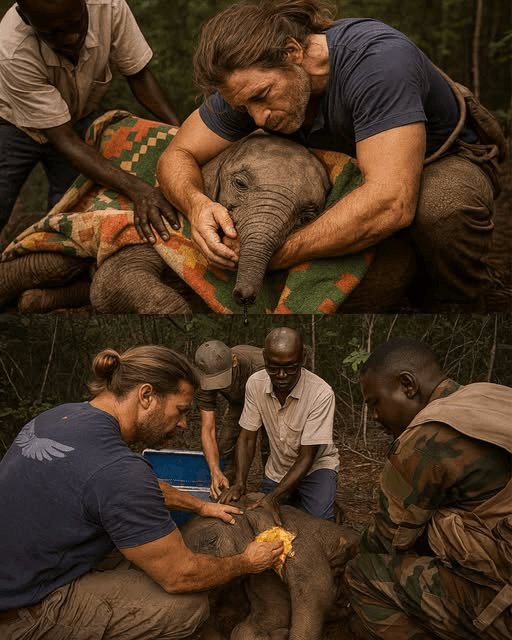
A young elephant — barely a year old — had been spotted limping through thick brush, dragging behind her a cruel loop of wire biting deep into her front leg. The snare, likely set by poachers, had cut through layers of skin and muscle. Every step she took tightened the wound.
Nearby, her mother stood guard, trembling with fear and fury. She refused to leave her baby’s side, her low rumbles vibrating through the forest — the sound of a mother’s helpless grief.
For the rangers who patrol the Shimba Hills, this sight was heartbreakingly familiar. Poachers’ snares, crude and merciless, have long haunted this land. Meant for bushmeat, they catch anything unlucky enough to cross their path — antelope, zebra, elephants. And for animals like this calf, such traps often mean a slow, agonizing death.
But on April 5th, 2022, fate had other plans.
The Call That Changed Everything
At sunrise, a call came through to the Sheldrick Wildlife Trust and the Kenya Wildlife Service’s Tsavo Mobile Veterinary Unit. A snared calf had been found. Immediate action was needed.
Dr. Poghon, a seasoned wildlife veterinarian, was quickly briefed. Within minutes, a helicopter lifted off the ground, carrying him over the vast landscape of Tsavo — toward a life hanging in the balance.
Every minute mattered. Infection was spreading. The wound was deep. If they arrived too late, the little elephant’s story would end before it had truly begun.
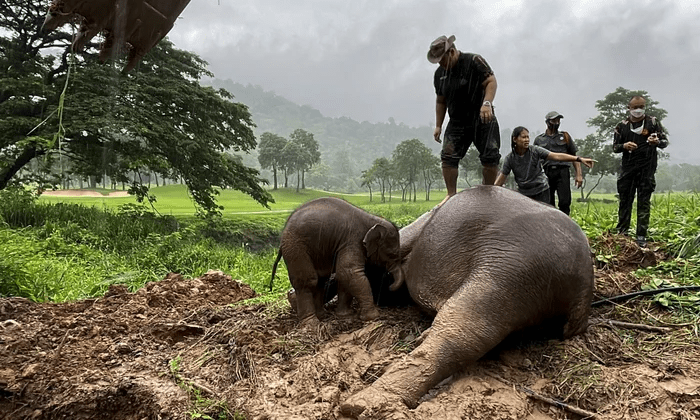
The Mother’s Stand
When the team landed, they immediately faced their first challenge — the mother.
Massive, anxious, and fiercely protective, she would not let anyone near her baby. The rangers and pilots knew that approaching too closely could turn deadly.
From above, the helicopter pilot guided her gently into a nearby clearing. Her ears flared, her trunk rose, and for a moment it seemed she might charge. But with calm precision, Dr. Poghon raised his dart gun and fired a tranquilizer.
The dart struck true. Within minutes, the mother began to sway, her great frame folding slowly to the ground. Even as she drifted into sleep, her trunk moved instinctively toward the faint sound of her calf.
The rescue team rushed forward, working in silence and urgency. They kept her airway clear, poured water over her skin to prevent overheating, and positioned her head so she could breathe easily. Her immense body was still, but the air around her pulsed with emotion — love, fear, protection.
The Search for the Baby
Meanwhile, the helicopter turned back into the dense forest to locate the calf. The pilot scanned the treetops, eyes sharp against the tangle of green. Then, movement — a small gray figure struggling up a hill, dragging something metallic that glinted in the morning sun.
The baby.
She was exhausted, her steps uneven, her leg swollen and bleeding. The wire was wrapped so tightly that it had nearly fused with her skin.
The team landed nearby and approached slowly, calming her with soft gestures. Despite her fear, the little elephant didn’t run. She seemed to sense that these strangers meant no harm.
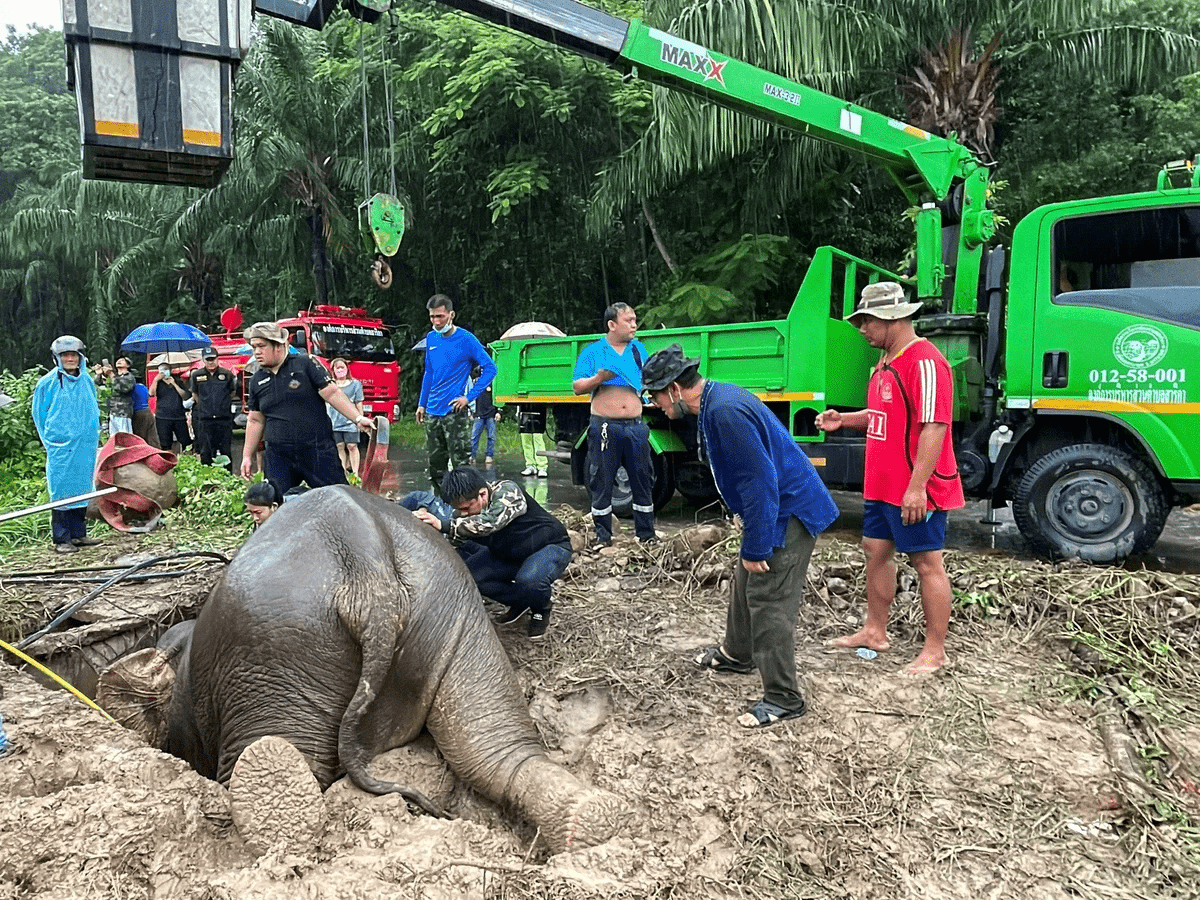
The Battle Against the Wire
The rescue team got to work immediately. The wire was thick, rusted, and buried deep into her flesh. Every tug sent shivers through her body. Carefully, they cut away at it inch by inch.
When the final coil fell free, the team saw the full extent of the damage — the wound was raw and open, the edges infected. Without quick treatment, she would never walk again.
Dr. Poghon flushed the wound thoroughly, cleaned it with antiseptic, and applied antibiotics and anti-inflammatory medicine. Then, using green healing clay, he covered the injury — a natural remedy known to draw out infection and cool the pain.
The calf stood quietly through it all, her sides heaving, her eyes wide and trusting. She didn’t understand what was happening — only that, somehow, the pain was easing.
The Uphill Journey Back to Love
Now came the hardest part.
The mother was still resting under sedation nearly half a kilometer away. To reunite them, the rangers would need to carry the calf — through thick vegetation, across uneven ground, under the punishing tropical heat.
There were no machines to help, only human hands.
Step by step, they lifted her. The air was heavy, humid, filled with the buzzing of insects and the muffled trumpets of distant elephants. The baby let out a soft cry, unsure but trusting.
At last, they reached the clearing. The mother lay there, breathing steadily, her ears twitching faintly. The team gently lowered the calf beside her, brushing her small trunk against her mother’s larger one before stepping back.
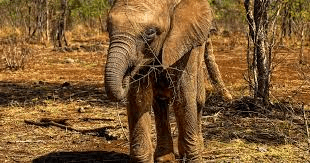
A Mother’s Awakening
Minutes later, the tranquilizer began to wear off. The mother’s breathing quickened. Her massive body shifted. Slowly, she opened her eyes.
For a heartbeat, she seemed confused. Then she realized her calf was beside her.
What came next silenced everyone.
A low, trembling rumble filled the air — the sound of a mother calling to her baby. The calf answered with a soft trumpet, pressing herself against her mother’s side. The forest seemed to exhale with them.
The rangers and vets stood still, watching as the two leaned into each other. Then, with deliberate grace, the mother rose to her feet. Her calf limped but followed, their trunks brushing together in a gesture as old as time.
Together, they disappeared into the dense green of the Shimba Hills — two silhouettes melting into the mist, free once more.
Healing in the Wild
For days after the rescue, rangers monitored them from a distance. The calf’s leg, though scarred, began to heal faster than anyone expected. She moved more easily with each sunrise, her spirit undimmed.
The team decided to name her Hope — a name that seemed to fit not only her survival, but what she represented for every creature still caught in a snare, waiting to be found.
Dr. Poghon later reflected on the experience:
“Every rescue reminds us what’s at stake. These are not just animals. These are families — living, feeling beings trying to survive in a world that grows smaller for them every day.”
More Than One Life Saved
Across Africa, tens of thousands of wild animals die each year in snares — silent victims of greed and neglect. Many never get a second chance. But on that April morning, one baby elephant did.
Hope’s rescue was a triumph not just of skill, but of compassion — a rare alignment of courage, timing, and love that defied the odds.
Because in the vast wilderness of Kenya, it wasn’t just a calf that was saved. It was a story — one that proved that humanity still has the power to protect, to heal, and to choose kindness.
A Second Chance at Freedom
Today, Hope and her mother roam the hills together once more. Their tracks cross streams and valleys, weaving new memories into the red earth. She still bears a faint scar on her leg — a reminder of what she endured, and what she overcame.
But it’s not a mark of pain anymore. It’s a mark of survival.
That day in the Shimba Hills, something extraordinary happened. A baby elephant’s cry met human compassion, and from that meeting came a story of redemption — proof that even in a world scarred by cruelty, love can still find a way.
Because sometimes, saving one life doesn’t just change that life. It changes us all.
And on that morning, as the sun rose over Kenya’s wild heart, a little elephant named Hope took her first steps toward freedom — one limping, beautiful step at a time.

